 Menu
Menu
-
Experiences
-
Experiences
-
Posters
Menu
-
Categories
-
Places
Menu
- Galleries LICHT Gallery ExpoGeorgia IArt Gallery Dimitri Shevardnadze National Gallery Tbilisi Digital Space
- City sites Mtatsminda Park Mziuri Park Vake Park April 9 (Alexander) garden Shota Rustaveli Avenue
- Children's studios Creative center Art BOOM Tamashobana Happy Kids Art Club Ferdinand farm GinGer
- Ecclesiastical institutions Tbilisi Yoga Loft TBILISI YOGA VILLA Transcendental Meditation Georgia Lumos Yoga Cave
- Event spaces KERA Space Gardenia Shevardnadze Orbeliani Bazaar Fabrika bibliotheque_tbilisi
- Cafe-restaurants Blue Fox Restaurant Tsiskvili Utskho 8000 Vintages Wasserstrasse
- Cinemas Amirani Cinema Cavea City Mall Saburtalo Cavea Grand Mall Cavea Tbilisi Mall Cavea East Point Cavea Galleria
- Concert halls Kakhidze Music Center Monohall MONUMENT Tbilisi Concert Hall Tbilisi Sports Palace
- Lecture halls Terminal Auditoria Colab TBC Concept PRANA
- Museums Georgian Museum of Fine Arts Georgian National Museum Experimentorium Holoseum Zurab Tsereteli Museum of Modern Art
- Nightclubs/bars Love Bar Underwheel club Dedaena Bar KHIDI MTKVARZE
- Educational institutions Institut Français de Géorgie Beka's School BTU The Thinking Academy Japanese Language & Culture Center
- Public organizations Georgian Historic Vehicles Association Georgian-Ukrainian platform (Ukrainian House) The Samaritan Association of Georgia Blood Bank
- Hotels Tbilisi Hills & Residence Pullman Tbilisi Axis Towers Stamba Hotel Sheraton Grand Tbilisi Metechi Palace Holiday Inn Tbilisi
- Sports grounds Dinamo Arena Mikheil Meskhi Stadium Hippodrome Lisi Lake Lilo Arena Paichadze Stadium
- Theaters Nodar Dumbadze Theater (ნოდარ დუმბაძის თეატრი) Tbilisi Circus Royal District Theatre Griboedov Theatre Gabriadze Theatre
-
Categories
-
Posters
-
Categories
-
Places
Menu
- Galleries LICHT Gallery ExpoGeorgia IArt Gallery Dimitri Shevardnadze National Gallery Tbilisi Digital Space
- City sites Mtatsminda Park Mziuri Park Vake Park April 9 (Alexander) garden Shota Rustaveli Avenue
- Children's studios Creative center Art BOOM Tamashobana Happy Kids Art Club Ferdinand farm GinGer
- Ecclesiastical institutions Tbilisi Yoga Loft TBILISI YOGA VILLA Transcendental Meditation Georgia Lumos Yoga Cave
- Event spaces KERA Space Gardenia Shevardnadze Orbeliani Bazaar Fabrika bibliotheque_tbilisi
- Cafe-restaurants Blue Fox Restaurant Tsiskvili Utskho 8000 Vintages Wasserstrasse
- Cinemas Amirani Cinema Cavea City Mall Saburtalo Cavea Grand Mall Cavea Tbilisi Mall Cavea East Point Cavea Galleria
- Concert halls Kakhidze Music Center Monohall MONUMENT Tbilisi Concert Hall Tbilisi Sports Palace
- Lecture halls Terminal Auditoria Colab TBC Concept PRANA
- Museums Georgian Museum of Fine Arts Georgian National Museum Experimentorium Holoseum Zurab Tsereteli Museum of Modern Art
- Nightclubs/bars Love Bar Underwheel club Dedaena Bar KHIDI MTKVARZE
- Educational institutions Institut Français de Géorgie Beka's School BTU The Thinking Academy Japanese Language & Culture Center
- Public organizations Georgian Historic Vehicles Association Georgian-Ukrainian platform (Ukrainian House) The Samaritan Association of Georgia Blood Bank
- Hotels Tbilisi Hills & Residence Pullman Tbilisi Axis Towers Stamba Hotel Sheraton Grand Tbilisi Metechi Palace Holiday Inn Tbilisi
- Sports grounds Dinamo Arena Mikheil Meskhi Stadium Hippodrome Lisi Lake Lilo Arena Paichadze Stadium
- Theaters Nodar Dumbadze Theater (ნოდარ დუმბაძის თეატრი) Tbilisi Circus Royal District Theatre Griboedov Theatre Gabriadze Theatre
Posters
-
Categories

Georgian National Museum
3, A. Purtseladze St., Tbilisi
The National Museum of Georgia was founded in 2004 on the basis of the decree of the President of Georgia. He is the legal heir of the "Museum of the Caucasus" founded in Tbilisi in 1852 and the continuation of the country's long museum traditions. With its establishment, structural, institutional and legislative reforms in the field of cultural heritage protection began. The purpose of creating the union was to gather the largest part of the moving monuments of cultural heritage, significant intellectual and scientific-research potential. For the effective management of national treasures, the museum has introduced a unified management system, a unified scientific and information base, and defined museum policy. The unified network of museums included in the union has an interdisciplinary form of scientific-research, restoration-conservation, exhibition and educational activities. The National Museum cooperates at the local and international level with other institutions in the field of education and culture, the state and private sector and thus ensures the fruitful activity of the National Museum of Georgia. The institutional development of the National Museum is supported by UNESCO, the European Union and other international organizations.
Georgian National Museum
Event archive
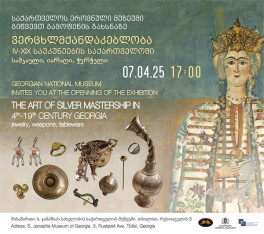
Событие уже прошло
 Georgian National Museum
Georgian National Museum
from 25 ₾
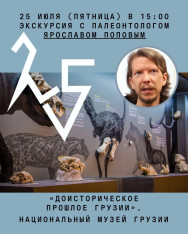
Событие уже прошло
 Georgian National Museum
Georgian National Museum
from 80 ₾
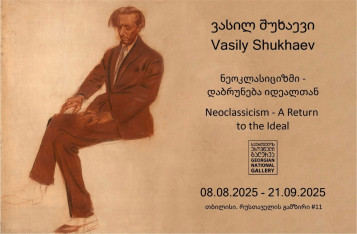
Событие уже прошло
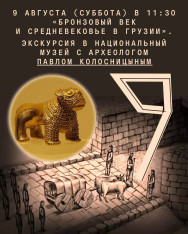
Событие уже прошло
 Georgian National Museum
Georgian National Museum
from 80 ₾
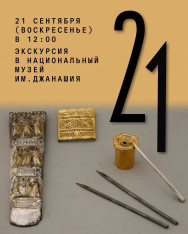
Событие уже прошло
History of Creation
The Georgian National Museum has a long and fascinating history, beginning in 1852. It was founded by the Caucasian Department of the Imperial Russian Geographical Society with the aim of collecting materials related to the history, archaeology, and ethnography of the Caucasus. In 1867, the museum was renamed "Caucasian Museum" following an initiative by the German scholar Gustav Radde, who played an active role in its development.
When Georgia gained independence in 1919, the museum became known as the "Museum of Georgia." However, after the Bolshevik occupation in 1921, part of the museum's collections was moved to Europe. Only after the end of World War II did they return to Georgia, but within the framework of the Soviet Union.
In 1947, the museum was renamed in honor of Georgian historian Simon Janashia, becoming the "Simon Janashia Museum of Georgia." In 2004, as part of a reform, 13 museums across the country were merged into a unified system, which includes:
- Museum of Soviet Occupation
- Museum of the History of Tbilisi
- State Museum of Georgian Art, among others.
The main museum building is located in Tbilisi on Rustaveli Avenue. The new building was constructed in 1910 to replace the old one, which was in poor condition. Today, the museum occupies three floors, housing numerous exhibits that showcase Georgia's rich history, culture, and archaeological findings.
Collections and Exhibitions of the Museum
The Georgian National Museum in Tbilisi is an incredibly interesting place, home to unique artifacts that span Georgia's history from ancient times to the 20th century. The first floor of the museum displays items from the Bronze and Early Iron Ages, which is undoubtedly one of the most exciting parts of the collection.
The second and third floors are dedicated to later periods, including exhibitions on war and the Soviet occupation. These displays can be emotionally challenging, especially for children, as many of them address tragic events in Georgia's history. However, they are crucial for understanding the historical processes and how the country endured difficult and painful moments during the 20th century.
Georgian National Museum: Visitor Information
The Georgian National Museum is located in the center of Tbilisi at 3 Shota Rustaveli Avenue. It is easily accessible by public transport. The nearest metro station is "Freedom Square," located just 100 meters from the museum. Several bus routes also stop nearby, including buses No. 6, 14, 31, 33, and 37, providing convenient connections across the city, including from the airport and railway station.
The museum is open from Tuesday to Sunday, from 10:00 to 18:00. Entrance fees are as follows:
- Children under 6 years old: Free
- Schoolchildren: 0.5 GEL
- Adults: 15 GEL
- Family ticket (2 adults and 3 children): 23 GEL
- Family ticket (2 adults and 2 children): 19 GEL
Additionally, aside from visiting the museum and other landmarks, you can buy gift certificates for various activities from the online experience store in Tbilisi, to treat yourself or your loved ones to unforgettable experiences.
Sign up for the newsletter



